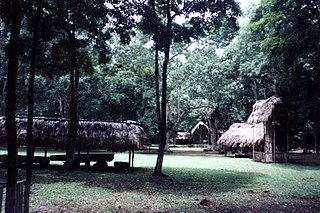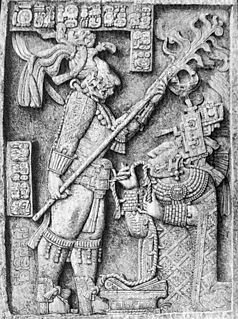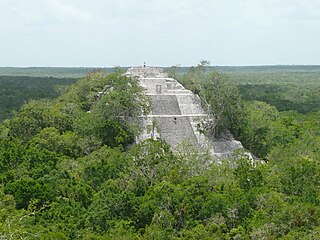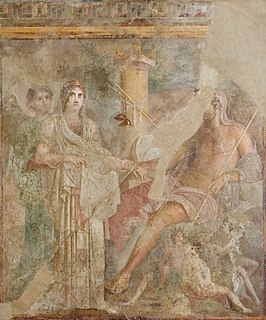
Year 752 (DCCLII) was a leap year starting on Saturday of the Julian calendar. The denomination 752 for this year has been used since the early medieval period, when the Anno Domini calendar era became the prevalent method in Europe for naming years.

Dos Pilas is a Pre-Columbian site of the Maya civilization located in what is now the department of Petén, Guatemala. It dates to the Late Classic Period, being founded by an offshoot of the dynasty of the great city of Tikal in AD 629 in order to control trade routes in the Petexbatún region, particularly the Pasión River. In AD 648 Dos Pilas broke away from Tikal and became a vassal state of Calakmul, although the first two kings of Dos Pilas continued to use the same emblem glyph that Tikal did. It was a predator state from the beginning, conquering Itzan, Arroyo de Piedra and Tamarindito. Dos Pilas and a nearby city, Aguateca, eventually became the twin capitals of a single ruling dynasty. The kingdom as a whole has been named as the Petexbatun Kingdom, after Lake Petexbatún, a body of water draining into the Pasión River.

Piedras Negras is the modern name for a ruined city of the pre-Columbian Maya civilization located on the north bank of the Usumacinta River in the Petén department of northeastern Guatemala. Piedras Negras is one of the most powerful of the Usumacinta ancient Maya urban centers. Occupation at Piedras Negras is known from the Late Preclassic period onward, based on dates retrieved from epigraphic information found on multiple stelae and altars at the site. Piedras Negras is an archaeological site known for its large sculptural output when compared to other ancient Maya sites. The wealth of sculpture, in conjunction with the precise chronological information associated with the lives of elites of Piedras Negras, has allowed archaeologists to reconstruct the political history of the Piedras Negras polity and its geopolitical footprint.

Lintel 24 is the designation given by modern archaeologists to an ancient Maya limestone carving from Yaxchilan, in modern Chiapas, Mexico. The lintel dates to about 725 AD, placing it within the Maya Late Classic period. The text of Maya hieroglyphics indicates that the scene depicted is a bloodletting ritual that took place on 5 Eb 15 Mac, 709 AD. The ruler, Shield Jaguar, holds a torch while his consort, Lady Xoc, pulls a rope studded with what are now believed to be obsidian shards through her tongue in order to conjure a vision serpent.

Ucanal is an archaeological site of the ancient Maya civilization. It is located in the Petén department of northern Guatemala.

Itzamnaaj Bʻalam II was a Maya king who ruled in Yaxchilan from 681 until he died in the year 742. He is also called Shield Jaguar II by modern writers and commonly referred to simply as Shield Jaguar based on his name glyph before the phonetic name was deciphered.

Yaxun Bʻalam III (also known as 6-Tun-Bird-Jaguar) was a high king of the Mayan city Yaxchilan from 631 until 681.
Rulers of Yaxchilan were leaders of the Maya civilization polity of Yaxchilan during its existence as a prominent city-state. The first high king (ahau) was Yat Balam in the year 320. The dynasty probably ended in the late 9th century with the decline of Yaxchilan. The greatest of the high kings were Itzamnaaj B'alam II and his son Yaxun B'alam IV.

During the 7th and 8th centuries in Mesoamerica, there was an evident shift in the roles women played in ancient Maya society as compared with the previous two centuries. It was during this time that there was a great deal of political complexity seen both in Maya royal houses as well as in the Maya area. Warfare was a significant factor in political competition and marriage was one of the ways that alliances were made between the different polities. This was accompanied by a shift in women's roles from wife and mother to playing integral parts in courtly life, such as participating in rituals involving the supernatural world and at times ruling individual polities.

B'alaj Chan K'awiil was a Maya ruler of Dos Pilas. He is also known as Ruler 1, Flint Sky God K and Malah Chan K'awil.

Itzamnaaj K'awiil was a Mayan king of Dos Pilas. He was the third known ruler of that place. He is also known as the Ruler 2 and Shield God K.

Ucha'an K'in B'alam was the fourth Mayan king of Dos Pilas. He is also known as the Ruler 3, Master of Sun Jaguar, Scroll-head God K, Spangle-head and Jewelled-head. His title was "He of Five Captives".
Lady of Itzan was a queen of Dos Pilas.

K'awiil Chan K'inich was the last Maya king of Dos Pilas. He is also known as the Ruler 4 and God K Sky Mahk'ina.

Yo'nal Ahk III, also known as Ruler 5, was an ajaw of Piedras Negras, an ancient Maya settlement in Guatemala. He ruled during the Late Classic Period, from 758 to 767 AD. Yo'nal Ahk III ascended to the throne upon the death of Itzam K'an Ahk II, who may have been Yo'nal Ahk's father. He was succeeded by his probable brother, Ha' K'in Xook in around 767 AD. Yo'nal Ahk III left behind two surviving stelae at Piedras Negras, namely Stelae 14 and 16, the former of which has been called one of the finest niche stelae, according to Simon Martin and Nikolai Grube.

Lady Pakal was a Maya Queen consort of Yaxchilan in Mexico.


















